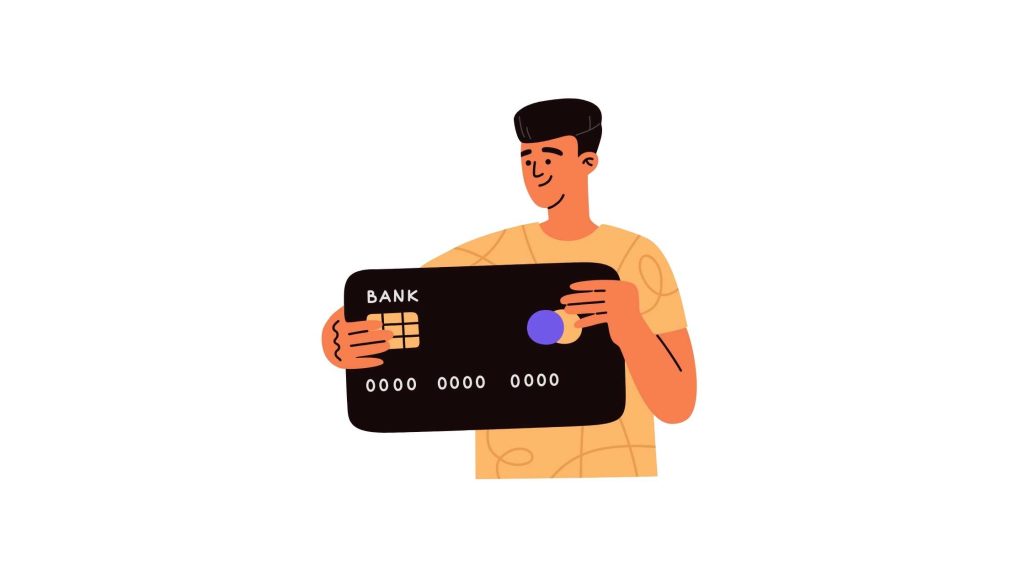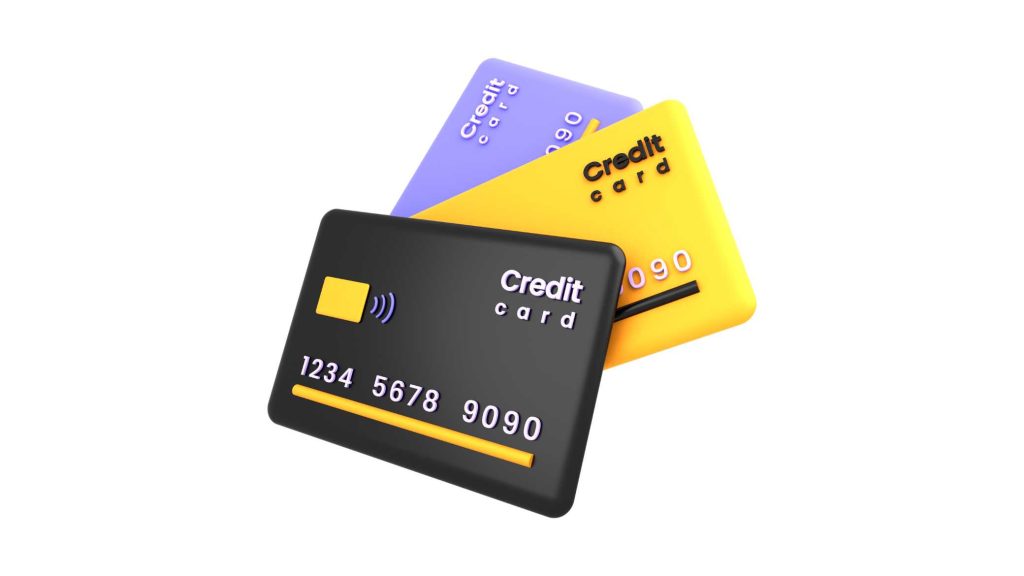Lowering Your Credit Card Interest Rate: 4 Key Strategies for Financial Success – A Comprehensive Guide
Credit Card Interest Rate : Credit cards have become a ubiquitous financial tool in today’s world, providing convenience, flexibility, and purchasing power to millions of consumers. In India, the number of credit card users is growing exponentially as more people recognize the benefits of using credit cards for daily transactions, online shopping, and even larger purchases. However, while credit cards can be incredibly useful, they also come with certain risks—one of the most significant being the high interest rates that can accumulate if balances are not paid off on time.
Table of Contents
Many credit card users end up in debt due to the accumulation of interest, which is charged on outstanding balances. Unfortunately, these interest charges can quickly spiral out of control, leading to a cycle of debt that is difficult to escape. To avoid this, it’s essential to manage credit card usage wisely, especially when it comes to interest rates.
This essay will provide an in-depth analysis of credit card interest rates, explain why they can be problematic, and outline four key strategies that can help reduce these rates. We will also explore how credit card interest rates are calculated, the importance of maintaining a good credit score, and how understanding the terms and conditions of your credit card can make a significant difference in managing your financial health
Understanding Credit Card Interest Rates
What is a Credit Card Interest Rate?
A credit card interest rate, also known as the Annual Percentage Rate (APR), is the cost of borrowing money from a credit card company. It is the percentage of the outstanding balance that is charged as interest if you do not pay your balance in full by the due date. Unlike debit cards, where the money comes directly from your account, credit cards essentially offer a short-term loan that must be repaid.
Credit card interest rates are usually expressed as an annual rate, but most companies calculate interest daily or monthly based on the outstanding balance. The higher the APR, the more expensive it becomes to carry a balance on your credit card. Interest rates can range from 12% to as high as 45% depending on the credit card, the bank, and the user’s credit score.
How is Credit Card Interest Calculated?

Credit card interest is typically calculated using a method known as the average daily balance. This means that the credit card issuer calculates interest based on your daily balance throughout the billing cycle. Every day you carry a balance, interest is added to the outstanding amount.
The formula used to calculate daily interest is as follows:
Interest = (Annual Interest Rate ÷ 365) × Daily Balance
For example, if you have an outstanding balance of Rs 10,000 and your credit card has an APR of 30%, the daily interest rate would be:
30% ÷ 365 = 0.08219%
This means that for each day you carry a balance of Rs 10,000, you will accrue Rs 8.22 in interest. Over time, this interest can add up significantly, making it harder to pay off the debt.
Why Credit Card Interest Can Be Problematic
Credit card interest rates are often much higher than other forms of credit, such as personal loans or home loans. As a result, carrying a balance on a credit card can be much more expensive. In many cases, credit card users pay only the minimum amount due each month, which barely covers the interest charges, leaving the principal balance unchanged. Over time, this can lead to a debt trap where the user is unable to pay off the full balance and continues to accumulate interest.
To avoid this situation, it is crucial to understand how to manage your credit card effectively and reduce the amount of interest you pay.
Four Key Strategies to Lower Your Credit Card Interest Rate

Managing your credit card wisely involves more than just paying off your balance every month. By following these four essential strategies, you can significantly reduce the interest rate on your credit card, save money, and improve your overall financial health.
1. Pay Your Credit Card Bill on Time
The first and most important step in avoiding credit card interest is to pay your bill on time every month. Most credit cards come with an interest-free grace period that lasts between 40 to 50 days, depending on the card issuer. This means that if you pay your full balance before the due date, you won’t have to pay any interest at all.
Missing a payment not only results in interest charges but can also lead to late fees and a negative impact on your credit score. If you pay only the minimum amount due, interest will be charged on the remaining balance from the transaction date, meaning you’ll end up paying much more over time.
Here are some tips for ensuring you pay your credit card bill on time:
- Set up automatic payments: Most credit card companies offer the option to set up automatic payments from your bank account. This can help ensure that you never miss a payment.
- Use payment reminders: If you prefer to pay manually, set reminders on your phone or through your bank’s mobile app to notify you when your bill is due.
- Pay more than the minimum: If you can’t pay the full balance, try to pay more than the minimum amount due. This will reduce the interest charged on the remaining balance and help you pay off your debt faster.
2. Avoid Paying Only the Minimum Due
Many credit card users fall into the trap of paying only the minimum amount due each month. While this may seem like an easy way to manage your finances, it actually leads to higher interest charges and extends the time it takes to pay off your balance.
Buy Now : Investment & Credit Course
When you pay only the minimum amount, the credit card company charges interest on the entire balance, not just the remaining amount. This means that you’ll end up paying interest on the same amount of money for months or even years.
For example, if you have a balance of Rs 50,000 and your minimum payment is Rs 2,500, paying just the minimum amount will result in interest charges on the full Rs 50,000, even though you’ve made a payment. Over time, this can result in paying thousands of rupees in interest.
To avoid this, always aim to pay off as much of your balance as possible each month. If you can’t pay the full amount, try to pay at least 50% of the balance to reduce the interest charges.
3. Compare Interest Rates Before Applying for a Credit Card
Before applying for a credit card, it’s important to compare the interest rates and terms offered by different banks. Some credit cards come with high annual fees, while others may have lower interest rates but fewer benefits. Understanding the terms and conditions of each card will help you choose the one that best suits your financial needs.
Here are some factors to consider when comparing credit cards:
- APR (Annual Percentage Rate): Look for cards with a lower APR, especially if you plan to carry a balance from month to month.
- Fees: Some credit cards charge annual fees, over-limit fees, and late payment fees. Make sure you understand all the fees associated with the card before applying.
- Introductory Offers: Many credit cards offer introductory 0% APR for a limited time. While these offers can be appealing, make sure you know what the APR will be after the introductory period ends.
By comparing credit card offers and choosing one with a lower interest rate, you can save money in the long run and avoid high interest charges.
4. Maintain a High Credit Score
Your credit score plays a significant role in determining the interest rate on your credit card. A higher credit score typically results in a lower interest rate, while a lower credit score can lead to higher interest charges. This is because lenders view individuals with higher credit scores as less risky and more likely to repay their debts.
There are several ways to maintain a high credit score:
- Pay your bills on time: Payment history is one of the most important factors in determining your credit score. Make sure to pay all your bills, including credit card payments, on time.
- Keep your credit utilization low: Credit utilization refers to the percentage of your available credit that you’re using. Try to keep your credit utilization below 30% to maintain a good credit score.
- Avoid opening too many credit accounts: Each time you apply for a new credit card, a hard inquiry is made on your credit report. Too many hard inquiries can lower your credit score, so be selective about applying for new credit.
- Monitor your credit report: Regularly check your credit report for errors or discrepancies that could negatively affect your score.
By maintaining a high credit score, you’ll not only qualify for lower interest rates on your credit cards but also be in a better position to negotiate with your credit card company for a lower rate.
Additional Tips for Managing Credit Card Debt
While the four strategies outlined above can help you lower your credit card interest rate, there are also other steps you can take to manage your credit card debt more effectively.
Consider a Balance Transfer
Many credit card companies offer balance transfer options that allow you to transfer your existing credit card debt to a new card with a lower interest rate or a 0% APR introductory period. This can be a great way to save money on interest and pay off your debt faster. However, be sure to read the terms carefully, as balance transfers often come with fees, and the 0% APR may only last for a limited time.
Negotiate with Your Credit Card Company
If you’ve been a responsible credit card user with a good payment history, you may be able to negotiate a lower interest rate with your credit card company. Call your card issuer and explain that you’ve been a loyal customer and would like to request a lower interest rate. In many cases, the company may be willing to lower your rate to retain your business.
Use a Debt Snowball or Debt Avalanche Method
If you have multiple credit cards with outstanding balances, consider using the debt snowball or debt avalanche method to pay off your debt. With the debt snowball method, you focus on paying off the card with the smallest balance first, while making minimum payments on the others.
Also Read : Get Credit Cards : Does Getting a New Credit Card Hurt Your Credit Score? Everything You Need to Know 2024
With the debt avalanche method, you prioritize paying off the card with the highest interest rate first. Both methods can help you pay off your debt more efficiently and save on interest.
Avoid Cash Advances
Using your credit card for a cash advance can be extremely costly, as these transactions often come with higher interest rates and additional fees. If you need cash, consider other options such as a personal loan or borrowing from a friend or family member.
Credit Card Interest Rate – Conclusion
Credit cards can be an incredibly useful financial tool when used wisely, but they can also lead to significant debt if not managed properly. By understanding how credit card interest rates work and implementing the four key strategies outlined in this essay—paying your bill on time, avoiding paying only the minimum due, comparing interest rates before applying for a card, and maintaining a high credit score—you can significantly reduce the amount of interest you pay and take control of your financial health.
In addition to these strategies, consider other options such as balance transfers, negotiating with your credit card company, and using debt repayment methods like the snowball or avalanche approach. By being proactive and staying informed about your credit card terms and conditions, you can enjoy the benefits of using a credit card without falling into the trap of high interest rates and mounting debt.
Ultimately, the key to successful credit card management is discipline, financial literacy, and a commitment to making smart financial decisions. By keeping these principles in mind, you can make the most of your credit card while avoiding the pitfalls of high-interest debt.



